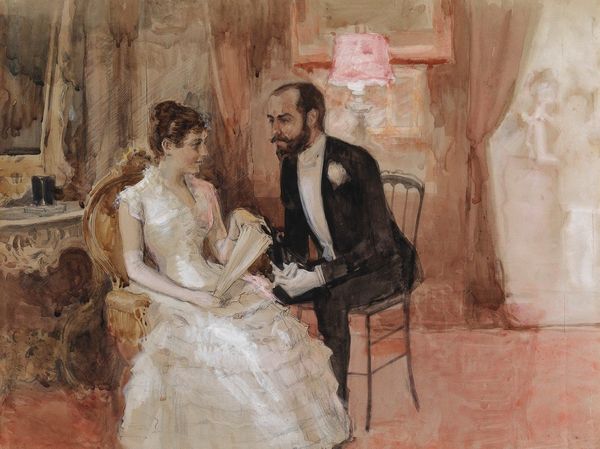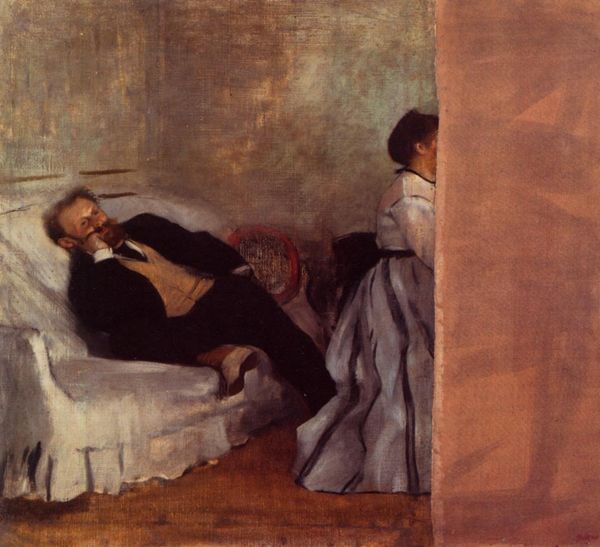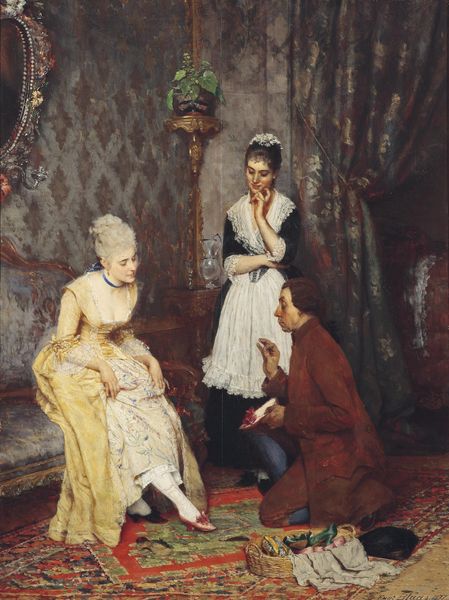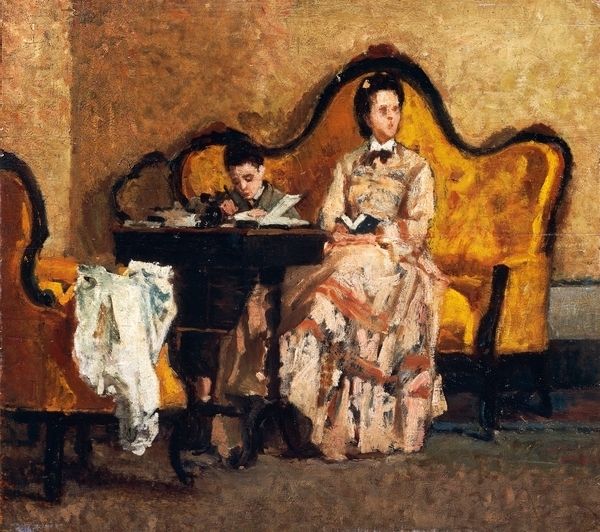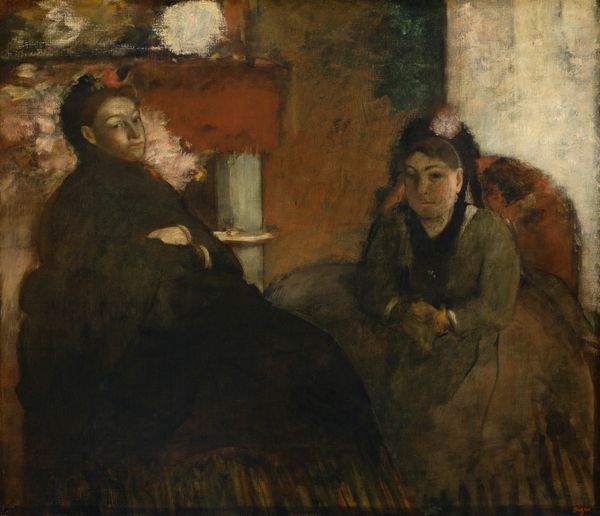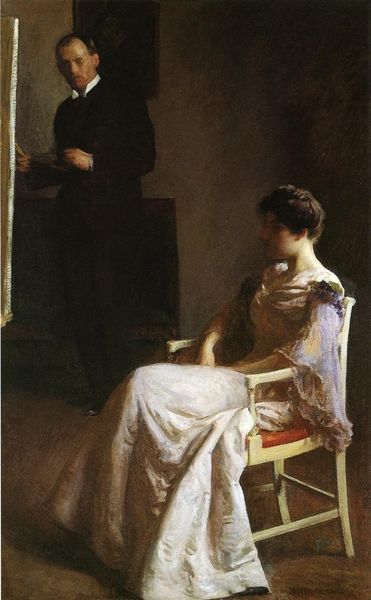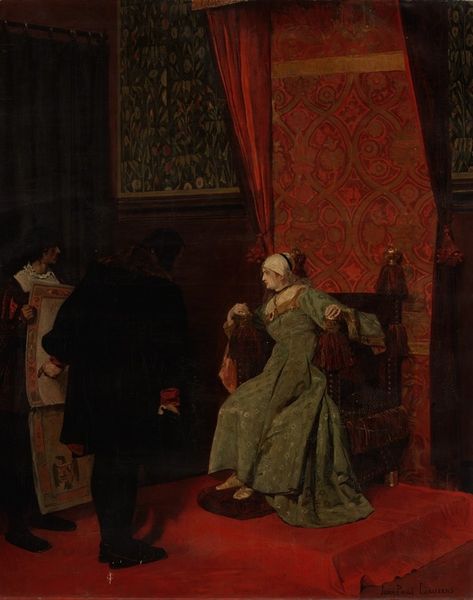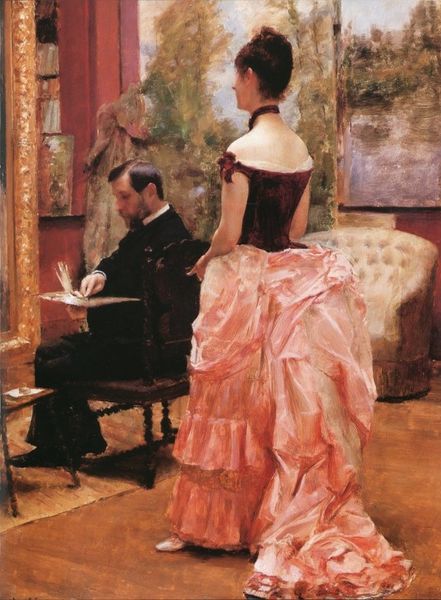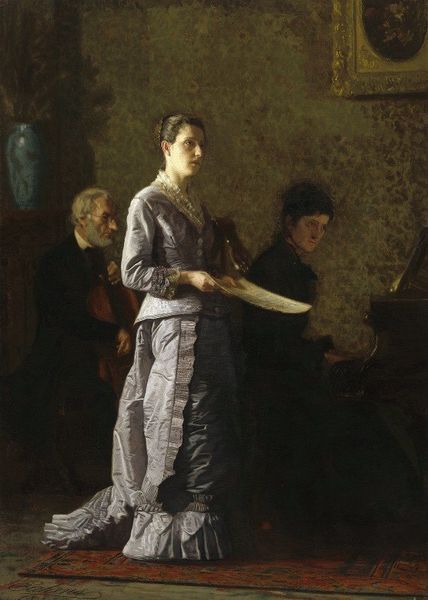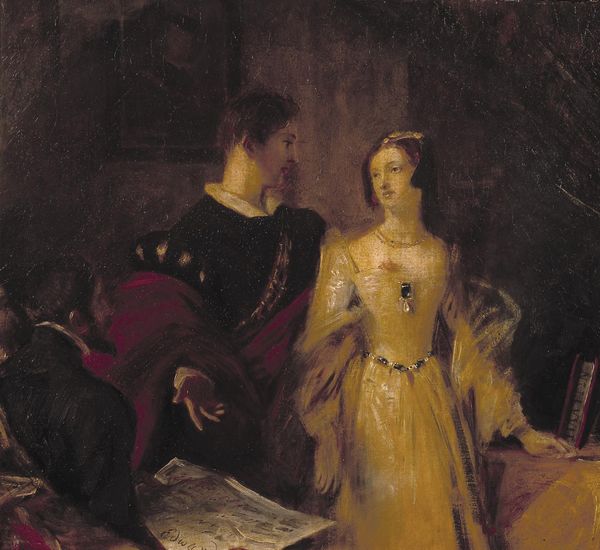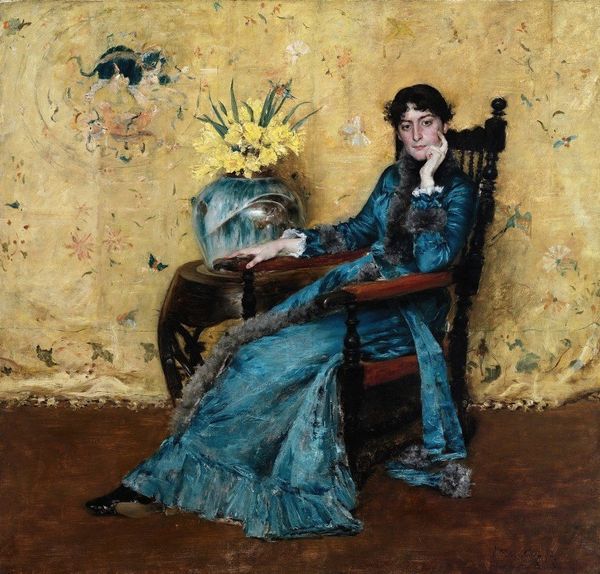
painting, oil-paint
#
portrait
#
gouache
#
figurative
#
acrylic
#
painting
#
impressionism
#
oil-paint
#
figuration
#
oil painting
#
genre-painting
#
watercolor
Copyright: Public Domain: Artvee
Curator: Here we have Edgar Degas’s double portrait, Edmondo and Thérèse Morbilli, likely completed around 1865. It's an oil on canvas. Editor: A rather subdued scene. The tonality, with its muted greens and browns, conveys a certain reserve, a withholding, doesn’t it? Even the red seems somehow… contained. Curator: Indeed. Formally, Degas presents a fascinating juxtaposition of gazes. The woman directly confronts the viewer, a gesture of openness, while the man turns away, averting connection. Consider how this tension underscores the dynamic within the composition itself. Editor: That contrast is immediately apparent. He looks back at someone within the room, but what does she represent to us, gazing so directly forward? I find her pallid coloring almost mask-like, but notice how her dress balloons in pale folds as if filled by sorrow and despair? Is Degas making a comment about the hidden sadness within the wealthy, the emptiness of appearances? Curator: An interesting proposition, although difficult to prove. However, look at the interplay between the patterned wallpaper and the solid blocks of color in their attire. It creates a visual push and pull, preventing any one element from dominating. The artist avoids clear hierarchical ordering; it flattens the depth of the painting. Editor: You're right, I noticed the dress but it's not easy to keep one's eye moving across the various textures of fabric and paper and the light that gleams off their clothing. But why is this? It brings to mind certain societal symbols prevalent at the time... marriage perhaps represented as being trapped, isolated. Note the positioning of Thérèse, slightly forward but almost engulfed by her large dress. It feels symbolically heavy. Curator: Perhaps. However, it’s equally compelling to observe how Degas balances realism with painterly abstraction. Notice the rough brushwork, the visible layering of pigments – these elements foreground the artifice of the painted surface. They are literally “sat” upon velvet-covered, ornately structured furniture! It emphasizes that artifice and invites formal investigation, beyond easy iconographic interpretation. Editor: That's true, these elements make this particular composition complex and quite remarkable as he has merged two different aesthetic and social statements within one singular artistic canvas. The hidden language behind it seems almost endless to decode. Curator: Precisely, which keeps this artwork relevant across all temporal states of viewership as an intricate intersection of form, symbol and technique!
Comments
No comments
Be the first to comment and join the conversation on the ultimate creative platform.

